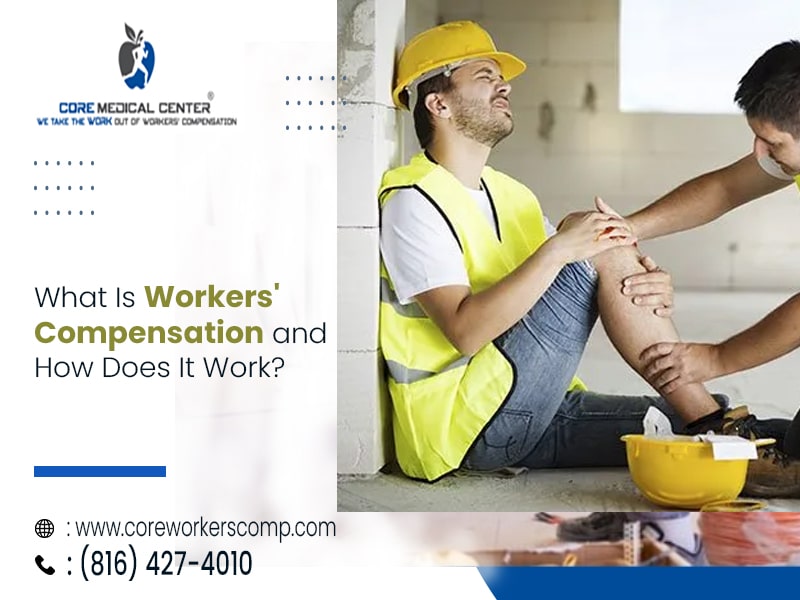Workers’ compensation is a critical component of the employment environment, providing financial security to employees who experience accidents or illnesses while doing their professional tasks. In this blog post, we’ll look at the basics of workers’ compensation, including what it is and how it works to protect both employees and employers.
Before that, if you have also encountered Workplace injury and want to get Federal Worker’s Compensation or State Worker’s Compensation, you can take the assistance of Core Medical Center in the USA. Our skilled and dedicated team manages all the paperwork to get the compensation. Not only that, you need to search for Pain Management Clinics after getting any injury as we provide primary injury management care. We have a skilled team who manages all the work efficiently.
But before applying for the benefits, you must have a vivid idea about Workplace Injury Compensation:-
- Definition of Workers’ Compensation
- Coverage and Eligibility
- Types of Injuries Covered
- Benefits Provided
- Claim Submission
- The No-Fault System
- Programs for Return to Work
- Legal Aspects and Dispute Resolution
Definition of Workers’ Compensation:
Workers’ compensation is a state-regulated insurance program that provides financial and medical advantages to injured or ill employees.
It acts as a safety net that ensures workers receive the care and compensation they require while eliminating the need for protracted legal battles.
Coverage and Eligibility:
Workers’ compensation insurance is required by law for the majority of enterprises. Employees who are injured or become ill due to work-related activities are covered.
Eligibility standards vary by state, and certain workers, such as independent contractors, may be excluded.
Types of Injuries Covered:
Workers’ compensation often covers a wide range of injuries, such as workplace accidents, repetitive stress injuries, occupational diseases, and mental health issues caused by work-related stress.
Benefits Provided:
Medical Care: The program pays for necessary medical treatment, such as doctor visits, surgeries, drugs, and rehabilitation programs.
Wage Replacement: Injured workers are entitled to a portion of their usual salary while they cannot work due to injury or illness.
Claim Submission:
Reporting: Employees who are injured on the job must notify their employer as soon as possible. It usually entails filling out a form provided by the company.
Employer’s Role: Employers are responsible for supplying employees with the paperwork and information they need to file a workers’ compensation claim.
The No-Fault System:
Workers’ compensation is a no-fault system, meaning employees can get benefits regardless of who caused the injury. Employees usually relinquish their perfect to sue their employer for carelessness in return for these perks. However, there may be exceptions in circumstances of willful harm.
Programmes for Return to Work:
Many workers’ compensation programs include return-to-work measures to assist injured employees in re-entering the workforce. They may provide modified duties, vocational training, or other assistance to facilitate a smooth return.
Legal Aspects and Dispute Resolution:
Injured workers can file an appeal against denials or inadequate compensation in a dispute. Administrative hearings or alternative dispute resolution processes may be used. On the other hand, employers must follow workers’ compensation regulations to avoid fines for noncompliance.
Closing words
Workers’ compensation is a crucial safety net that provides financial and medical assistance to employees who suffer work-related injuries or illnesses. Employees and employers can navigate the workers’ compensation system more successfully if they grasp the system’s fundamental features, resulting in a safer and more secure work environment. In case you want to get Federal Worker’s Compensation or State Worker’s Compensation, you can take the assistance of Core Medical Center in the USA.

